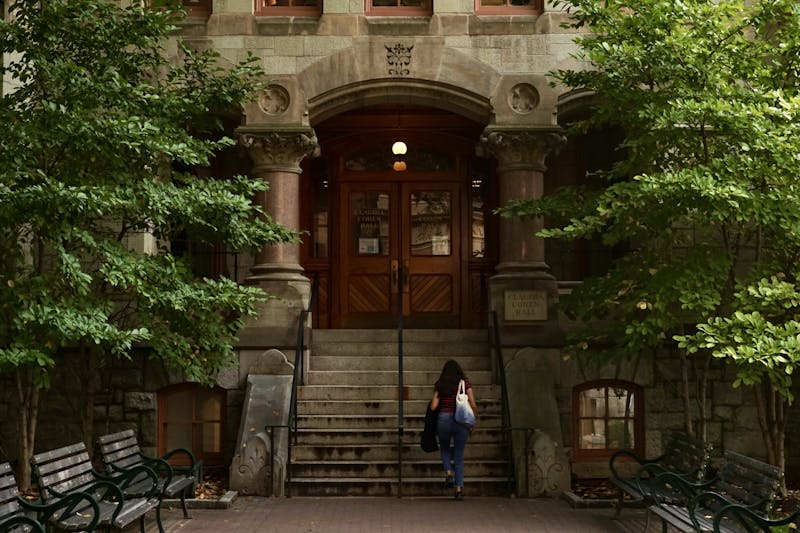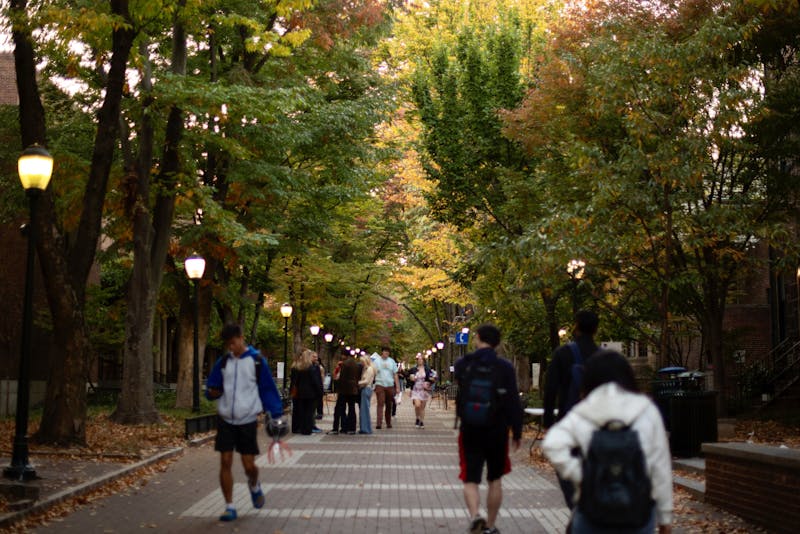
In 1962, amid violence that caused two deaths and many injuries, federal marshals escorted James Meredith through the University of Mississippi's doors as the first black student on campus.
Forty-three years later, a controversy has erupted at Ole Miss involving race, power and Meredith's legacy -- and a Penn professor is in the middle of it all.
In 2001, Terry Adkins, a professor of Fine Arts at Penn, entered a design competition to commemorate Ole Miss' role in the civil rights movement. A year later, a panel of five national judges chose his proposal unanimously.
The project was delayed for the next three years because of fluctuating construction estimates and repeated administrative requests for modifications to the design.
A few weeks ago, Adkins received a call from Ole Miss Chancellor Robert Khayat informing him that administrators scrapped his proposal in favor of a new design drawn up by architect Jim Eley, who handles much of the architectural work on campus.
"The [administrators] at the University of Mississippi do not want to face up to the sordid past," Adkins said.
His design included twin concrete archways, each containing glass doors with etched sayings such as, "Teach in fear no more" and "Unite in fear no more." On top of the archways, bronze bells hovered over the phrases "Freedom Forevermore" and "Justice Henceforth."
In keeping with competition requirements, he placed the memorial in the pathway between the library and the historic Lyceum building, which houses administrative offices and which played a role in Meredith's admission to the school.
While Khayat said he has the "highest regard for Mr. Adkins and his creativity," he added that certain architectural problems, which Adkins did not want to address, prevented the university from going forward with the design.
Khayat cited the memorial's large size, its incompatibility with the campus' dominant Greek revival architecture and the glass doors' vulnerability to vandalism as stumbling blocks. He also cast the location of the memorial and the use of the word "fear" without counterbalancing positive words as potential problems.
Khayat's decision, which he made along with his vice chancellors, has sparked a wave of letter-writing, meetings and articles in local newspapers. Many of those who oppose the decision say that Khayat has negated the democratic process and ignored the wisdom of public-art experts.
"We were specifically looking for a democratic decision-making process in erecting the memorial," said Susan Glisson, director of Ole Miss' Institute for Racial Reconciliation and a strong supporter of the memorial project.
Others ask why it took so long for the chancellor to decide he did not want Adkins' memorial or wonder whether he ever wanted it in the first place.
Competition judge Annete Carlozzi said that the upper administration never indicated disapproval during any of the deliberations.
Although Khayat blamed himself for not stopping the process long ago, he said in his "heart of hearts" that his action is in the best interest of the community.
Adkins, who will still receive a full honorarium, said that he agreed to changes during negotiations, such as installing benches with the "positive" words "opportunity" and "equality."
The new proposal, which should be completed by the end of the academic year, calls for, in Khayat's words, a "destination" spot equipped with benches, an archway and famous civil rights-related quotes. In a recent meeting with the chancellor, a small group of black student leaders added the idea of a statue of Meredith.
Adkins characterized the new design as an "uninformed, docile and static work of art that speaks to nothing of the importance of James Meredith's enrollment at Ole Miss, which was steeped in fear and violence."
While Adkins, who is black, stressed that he believes Khayat's decision was motivated by a dislike for the proposal and not by racial discrimination, he said that Khayat's choice to move the new design about 20 feet off the central axis of campus -- thereby making it "incidental" rather than prominent -- speaks to their divergent backgrounds.
"While [Khayat] was attending a segregated Ole Miss, I spearheaded the integration of an all-white Catholic school in Alexandria, Virginia," he said. "I experienced integration firsthand, similar to James Meredith."
Khayat denied any racial undertones to his decision and said his sole purpose was to have "a dignified, representative and attractive" memorial to "the role of Ole Miss and James Meredith in the integration of higher education."
The Daily Pennsylvanian is an independent, student-run newspaper. Please consider making a donation to support the coverage that shapes the University. Your generosity ensures a future of strong journalism at Penn.
DonatePlease note All comments are eligible for publication in The Daily Pennsylvanian.







